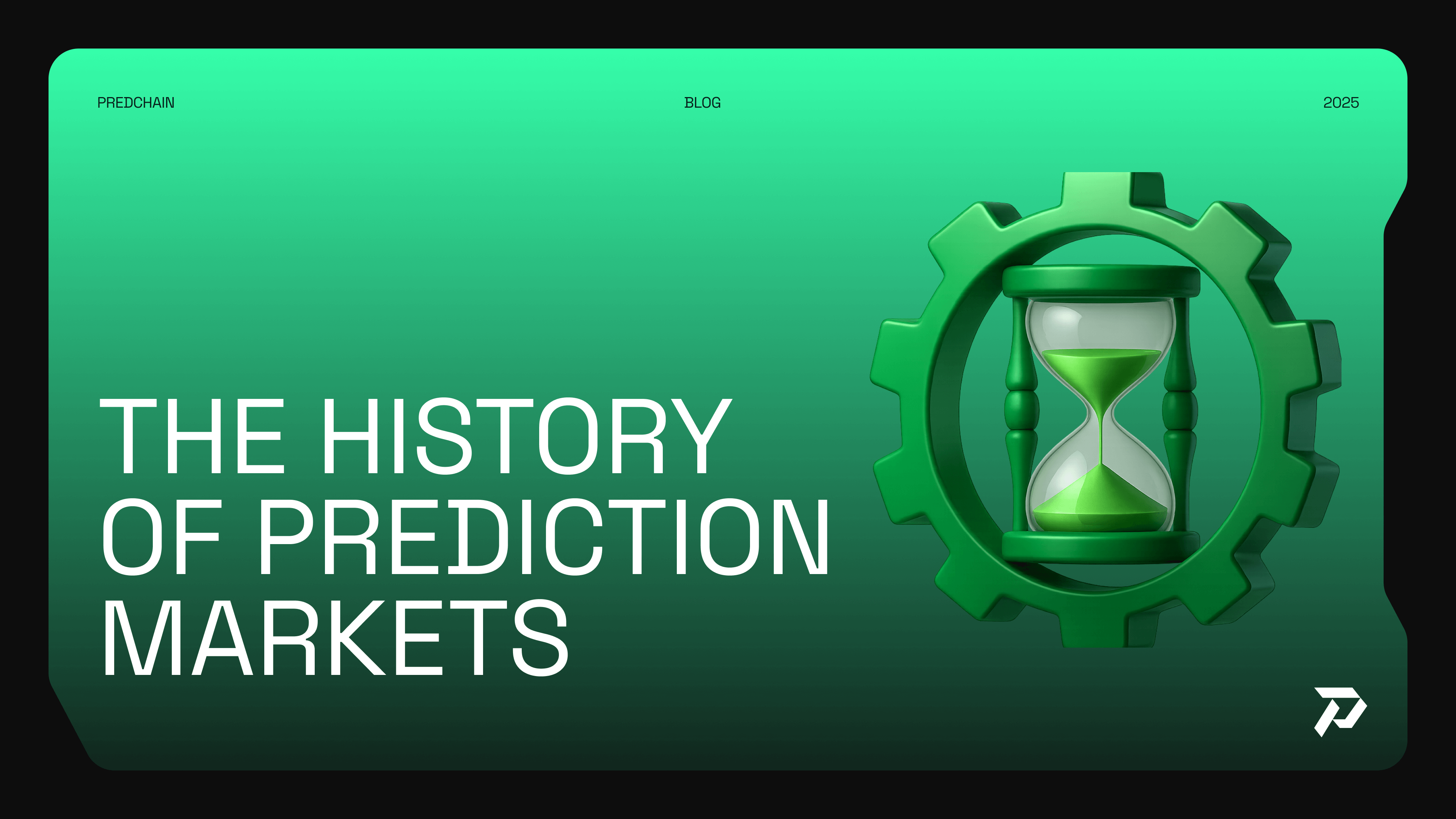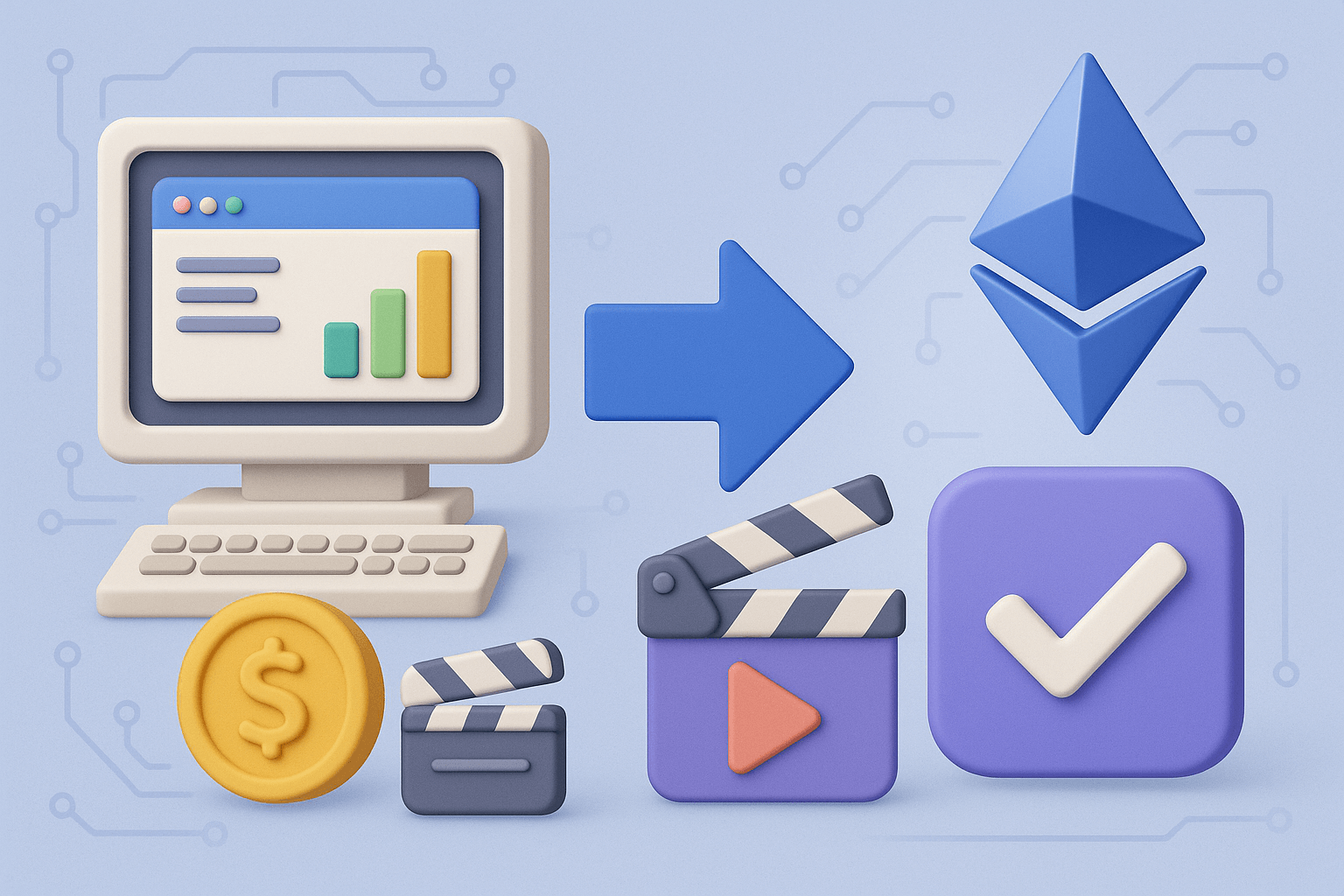The History of Prediction Markets: From the 1980s to Blockchain

Summary
Prediction markets have come a long way since their early academic roots in the 1980s. Initially pioneered by the Iowa Electronic Markets (IEM), these markets proved the power of the "wisdom of crowds." The rise of the internet in the late 1990s brought commercial platforms like Intrade into the mainstream, though these markets remained centralized. The true breakthrough came with the introduction of blockchain technology, which paved the way for decentralized prediction markets like Augur, Polymarket and, more recently, Predchain. These modern platforms offer unprecedented transparency, trustless operations, and global access to anyone with a cryptocurrency wallet.
The Academic Dawn: The 1980s and the IEM

The history of prediction markets can be traced back to the 1980s, when researchers at the University of Iowa launched the Iowa Electronic Markets (IEM). The IEM was the first real-world example of a prediction market, created for the purpose of studying the relationship between market prices and election outcomes. It allowed participants to buy and sell shares based on their predictions about election results, effectively demonstrating the concept of the "wisdom of crowds."
What made IEM groundbreaking was its ability to predict election results more accurately than traditional polling methods. The platform’s success proved that markets could aggregate information and make accurate predictions about future events. This idea that the collective input of individuals could lead to better forecasts — has become the cornerstone of prediction markets.
The Internet Era: Early Online Markets
As the internet became more widespread in the 1990s, the concept of prediction markets began to find a broader audience. The rise of commercial platforms like Intrade and the Hollywood Stock Exchange (HSX) helped expand access to these markets, even though they were still centralized.
-
Intrade: Launched in 1999, Intrade allowed users to trade shares based on the outcomes of political events, sports, and financial markets. While it gained a following for its user-friendly interface and accessibility, it was still centralized, meaning that a third party controlled the market.
-
Hollywood Stock Exchange (HSX): Similar to Intrade, HSX allowed users to trade shares in the box office performance of upcoming films. It was one of the first entertainment-focused prediction markets and gained significant popularity.
These platforms demonstrated that prediction markets could be applied in diverse industries beyond politics, including entertainment and financial markets. However, their centralized nature meant that users had to trust a central authority to manage transactions and resolve markets.
The Blockchain Revolution
In the early 2010s, the rise of blockchain technology and cryptocurrencies introduced a new era for prediction markets. Blockchain provided a decentralized solution to the limitations of earlier, centralized platforms. The key advantage was transparency: blockchain allowed for trustless transactions, meaning users could participate in markets without relying on an intermediary.
Early Decentralized Attempts
Augur: One of the first projects to experiment with decentralized prediction markets was Augur. Launched in 2015, Augur utilized Ethereum's blockchain to create a decentralized marketplace for betting on events. While Augur proved the feasibility of decentralized markets, it faced challenges with scalability, user adoption, and complex user interfaces.
Despite these challenges, Augur’s success demonstrated that prediction markets could thrive without relying on a central authority. It set the stage for the next generation of prediction markets.
Modern Decentralized Markets

The emergence of more user-friendly decentralized platforms has revolutionized prediction markets. Polymarket, Kalshi and Predchain represent the modern wave of decentralized prediction markets, offering improved interfaces, faster transaction speeds, and broader global access.
Polymarket
Polymarket, launched in 2020, has become one of the leading decentralized prediction markets. It focuses on offering quick, accessible, and legally compliant betting on a variety of outcomes, including politics and current events. Polymarket gained attention for its simplicity and ease of use, which helped bring decentralized prediction markets into the mainstream.
Kalshi: A Regulated, Centralized Approach
While decentralized prediction markets dominate much of the current landscape, Kalshi represents a centralized, regulated alternative. Launched in 2020, Kalshi operates as a Commodity Futures Trading Commission (CFTC)-regulated exchange for event contracts. Unlike decentralized platforms, Kalshi is centralized but offers legal, financial prediction markets on a wide range of topics, from economic indicators to geopolitical events.
Kalshi’s regulatory approval gives it a unique position in the market, appealing to those seeking a legal and regulated environment to trade event contracts. It also demonstrates the continued viability of centralized platforms in the prediction market space, even as decentralized solutions become more popular.
Predchain
Predchain is a decentralized platform for prediction markets built on the Binance Chain network. It allows users to create prediction events where others can place bets on the outcome. When people bet on your event, you earn BNB from the trading fees.
You can also participate in existing events by betting on their outcomes. If your prediction is correct when the event resolves, you earn BNB.
To get started, simply connect your crypto wallet, deposit some BNB, and you’re ready to begin!
Key Historical Milestones

-
1980s: The launch of the Iowa Electronic Markets (IEM) at the University of Iowa marks the academic beginning of prediction markets.
-
1999: Intrade is launched, expanding the prediction market to the public, with a focus on political and financial predictions.
-
2015: Augur, the first decentralized prediction market, is launched on the Ethereum blockchain.
-
2020: Polymarket brings decentralized prediction markets to the mainstream with a user-friendly platform.
-
2020: Kalshi is launched as a regulated, centralized prediction market platform, offering event contracts in a legal environment.
Conclusion: The Future of Prediction Markets
The history of prediction markets is a fascinating journey that shows how the concept has evolved from academic experiments to modern blockchain-based platforms. As the industry continues to grow, platforms like Predchain are paving the way for more decentralized, permissionless, accessible, and transparent prediction markets, while centralized platforms like Kalshi ensure that the regulated side of the market remains strong.
Want to create your own prediction events? Predchain makes it easier!
Frequently Asked Questions (FAQ)
What are prediction markets?
Prediction markets are platforms where participants buy and sell shares based on the outcome of future events. The market prices reflect the collective probability of those outcomes, leveraging the "wisdom of crowds" to make forecasts on events like elections, sports outcomes, or financial trends.
How accurate are prediction markets compared to traditional forecasting methods?
Prediction markets have often been shown to be more accurate than traditional methods like polls or expert predictions, especially in political elections. This is because they aggregate diverse information from many participants who have different insights, leading to a more reliable consensus forecast.
What was the significance of the Iowa Electronic Markets (IEM)?
The IEM, launched in the 1980s, was the first real-world prediction market focused on election outcomes. It provided academic proof that markets can efficiently aggregate information and predict future events better than some traditional polling methods.
How has blockchain technology changed prediction markets?
Blockchain has enabled decentralized prediction markets that operate without a central authority, increasing transparency and trust. Most prediction market platforms use blockchain to ensure transaction integrity, reduce censorship risks, and allow global, permissionless participation.
What are the challenges faced by decentralized prediction markets today?
Challenges include scalability issues, legal and regulatory uncertainty, user interface complexity, and achieving sufficient liquidity and user adoption. However, modern platforms like Polymarket and Predchain are addressing many of these through improved design, higher transaction speeds, and legal compliance efforts